Flooding in early January produced a catastrophic fish kill in the Richmond River, which is closed in its entirety until further notice. The closure is to be reviewed monthly.
A total of 50 tonnes of dead fish was registered at the Ballina tip weighbridge for disposal during January and that was just the fish that floated to the surface and were washed against the banks around town, not elsewhere in the river. Given that only about 10% of dead fish float, you begin to gather the enormity of the event. Rafts of dead fish were seen many miles offshore.
Also consider the equally huge biomass of invertebrates such as prawns, shrimp, crabs, yabbies, worms, oysters and other molluscs that died. All rely on dissolved oxygen to breathe and there was none.
Pro river netter Dallas Johnson said, “As we were cleaning up the tonnes of prime mullet, bream, blackfish and jewfish on the banks, somebody said to me, ‘It must break your heart to see so many thousands of dollars’ worth of fish die’. I told him, ‘It’s nothing to do with the money, mate, it’s the waste. Now I won’t catch them with a net, I won’t catch them with a soft plastic and nobody else will, either. And they won’t breed’.”
The disastrous kill that followed the February 2001 flood pales in comparison with this one.
Agriculture and Fisheries Minister Ian Macdonald says it’s ‘almost impossible’ to avoid fish kills after floods like these, although he has conceded that farming practices need to be examined. Having a minister responsible for both agriculture and fisheries is like having one person looking after foxes and chickens – it just doesn’t work.
The January flood was not a one-in-100-year event, nor even a 50-year event – it was a one-in-10-year one. There have now been at least half a dozen floods of this magnitude since 1954.
While local history records a number if incidents of sizable natural fish kills after flooding due to the inherent sulfidic soil structure of the floodplain, only the last two floods have resulted in fish kills on such a scale. This isn’t natural.
How did it happen? Basically, because of chronic and cumulative catchment mismanagement.
After the 2001 event, scientists and fisheries and agriculture managers told those at a series of seminars of the increasingly growing stresses on Richmond catchment waterways due to intensive agricultural practices including extensive wetland drainage, intensive cropping of sugar cane, tea trees, macadamias, soybeans and cattle grazing.
Oxidation of monosufidic black ooze (MBO) in agricultural drains, and vegetation decomposition on the floodplain contribute to the formation of ‘black water’ held in closed drains, channels and naturally in wetlands. The wetlands at least have the ability to slowly filter out the black water over time, while the drains are managed to promote rapid drainage of valuable crops.
The steep-sided drains are often covered in terrestrial weeds, often smartweed, which, when inundated, die and their decomposition further strips oxygen from the water. Some thinking farmers already are converting their drains to gently sloping affairs with ‘drowning’-resistant marsh vegetation while others either don’t know or don’t care.
When mixed with normal river water, one litre of black water has the capacity to strip the dissolved oxygen from up to 10,000 litres of river water. Fish and other river life can’t see it coming and die.
According to Causes of Deoxygenation in the Richmond River Estuary (2001/RD/60005) by Brad Eyre, Geoff Kerr and Leigh Sullivan of the Centre for Coastal Biogeochemistry at Lismore’s Southern Cross University:
Management options to reduce floodplain deoxygenation include removing cuttings from slashed pasture and transporting off-site, reducing slashed pasture windrow loads by using comb-type mowers, returning areas of the floodplain to wetlands to allow the establishment of inundation tolerant vegetation and retaining deoxygenated floodwaters in low-lying areas of the floodplain to allow oxygen consumption process to be completed before releasing this water back to the estuary.
Management options to reduce the formation of MBO include reducing the nutrient availability in drains, harvesting in-drain vegetation and transporting the organic matter off-site and reducing the drain depth.
• The full report can be downloaded at www.scu.edu.au/schools/esm/ccb/Final%20Report%20GOOO5.pdf
Reads: 5125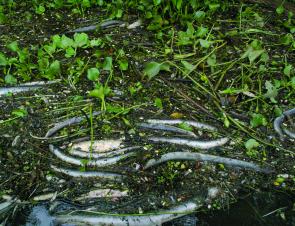
When hardy eels die in these numbers, is there hope for anything else?
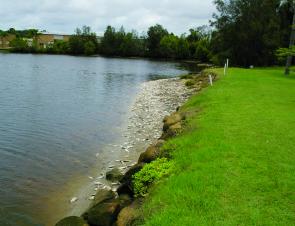
The shore at West Ballina is littered with dead fish and there are countless more on the bottom.
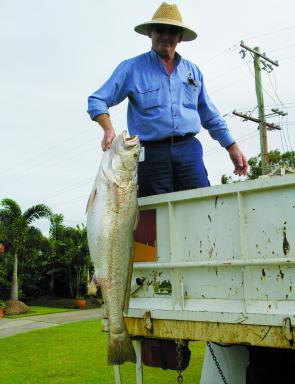
One of many jewfish on its way to the tip. Visitors and locals won’t be able to catch it and its breeding capacity is gone.
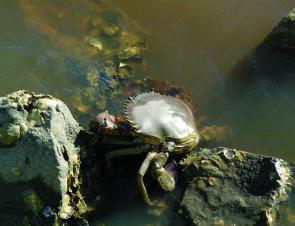
Mud crabs crawled out of the river in a vain attempt to find some water with oxygen.
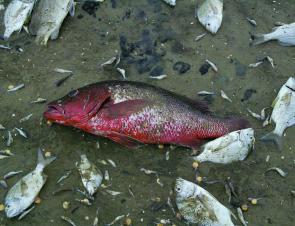
Mangrove jacks, bream, tiny catfish – all dead.
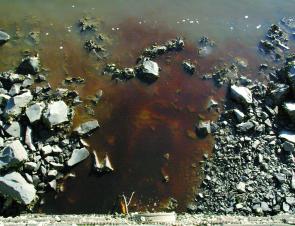
One of the culprits: Iron sulfide-rich ‘black water’ seeps from the base of a floodgate.

Stunned residents of the Ballina Quays canal development try to clean up the mess. The huge Quays kill is thought to have occurred when the first wave of fish headed back upstream on a high tide a few days after the flood peak. They got to around Burns Po
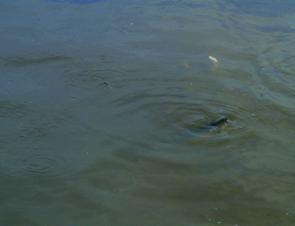
A mullet gasps for oxygen on the surface in a vain attempt to avoid suffocation.




